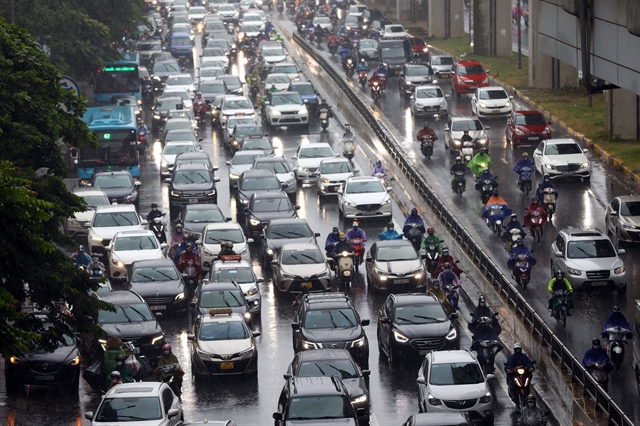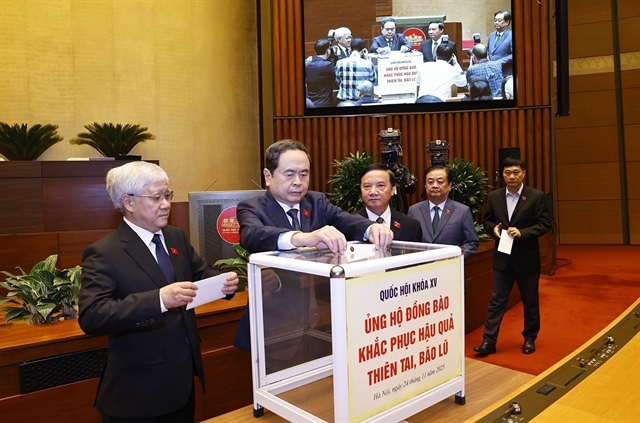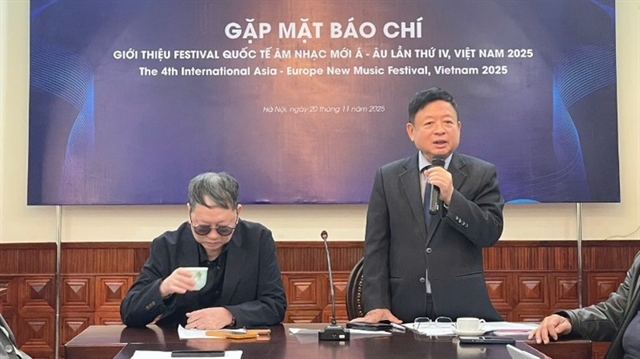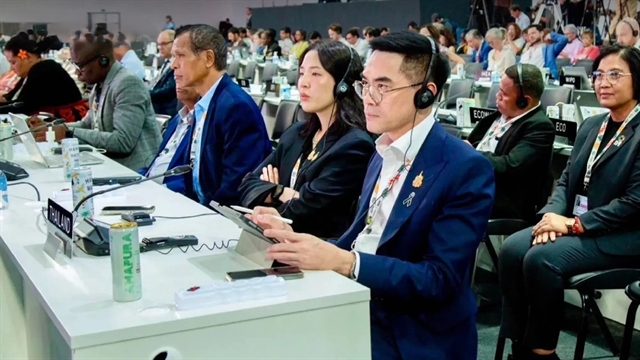 Society
Society

 |
| The area before Thanh Xuân – Khuất Duy Tiến underpass, where traffic jams are usually evident in rush hour. — VNA/VNS Photo Huy Hùng |
HÀ NỘI — Hà Nội could consider charging vehicles travelling into the inner-city areas as part of the efforts to curb the traffic jams, which costs the city an average of US$1 billion per year and has caused air pollution five times worse, according to transport experts.
Doãn Minh Tâm, former head of the Institute of Transport Science and Technology told Dân Trí online newspaper: "We need to review ongoing solutions for traffic jams: what are the results, why are they not up to speed, and who is responsible for delivering the solutions?"
He suggested three parts of the solution which included inquiring expert consultation for Hà Nội's traffic planning to 2030 with a view towards 2050, a plan to charge vehicles travelling into the inner-city areas (based on the city's resolution on this matter that has been approved), and a proposal for motorcycle-restricted areas.
According to Tâm, Decision No.519/QĐ-TTg in 2016 which outlined the plan for Hà Nội transportation to 2030 with a view towards 2050 signed by the Government needed to be amended for motorbikes.
He said a new plan that concerns only cars, buses and high-speed trains would not solve the core problems of traffic jams.
According to a study in November, Hà Nội currently houses eight million vehicles, with motorbikes outnumbering cars by seven to one, and that's not counting the vehicles travelling from other localities.
And if each Hanoian spent VNĐ10 million ($422) on a motorbike, the total costs of motorbikes are VNĐ70 trillion (nearly $3 billion).
"The motorbikes are private property, and citizens have the right to use them. It takes time for people to switch from using motorbikes to other methods of transportation," said Tâm.
Tâm proposed a separate lane system to ensure traffic safety, and avoid collisions with cars and buses on the streets.
He also said mixed traffic should be restricted.
According to Tâm, traffic jams are worse in urban areas, mostly on eight specific routes.
Ninety per cent of vehicles are travelling in these eight routes, creating jams in traffic nodes that costs Hà Nội $1.2 billion in damages annually.
According to Tâm, the proposal to restrict motorbikes from the Ring Road No.3 to central Hà Nội needed further research from experts.
"Big cities such as London and Singapore had an effective way of collecting urban traffic fees because they don't even use motorbikes that much," said Tâm.
Furthermore, banning motorbikes is not the way, and like European countries, a separate lane for two-wheelers is the preferred solution.
Motorbike restrictions in Guangzhou, China in 2006, saw good results in the first four to five years. However, this was due to Guangzhou's preparation beforehand: they already have four underground metro lines, and 300 bus routes across the city with 8,000 buses in operation.
But traffic jams returned in 2017 after a lot of people purchased cars after forgoing their motorbikes and ignoring public transportation. The Guangzhou government tried to restrict cars by regulations such as placing a limit on car sales, or a weekly restriction on travelling by car. These methods, however, were not effective.
Neighbouring ASEAN nations like Indonesia and Thailand had better results in controlling motorbikes, by separating motorbikes from cars using a single lane.
Tâm also proposed expanding the BRT (Bus Rapid Transit) system, where buses are travelling at high speed in their separate lane. However, Tâm noted that motorbikes are still travelling on the BRT lane, creating bus problems.
"The key to solving the problem is planned traffic, not a route-based planned traffic," said Tâm, "Cars are permitted to travel inside a seven-metre street, but on smaller streets, you can only travel on motorbikes."
Three-level road classification and planning is suggested by Tâm. The system is simple: a street can only be intersected by another on the same or under the level of it. For example, Trần Duy Hưng, a main urban street cannot be intersected by many small alleyways. Vehicles can only enter the alleys, and not exit them onto main roads. To travel from small alleys to main streets, people must travel to smaller, regional roads and then to the main streets.
"We should design intersections from Hoàng Đạo Thuý, then redirect the cars to Trần Duy Hưng. The traffic jams will slowly ease," suggested Tâm. — VNS
Tâm's eight common routes of traffic jamsOne: Phạm Văn Đồng - Phạm Hùng - Khuất Duy Tiến, Nghiêm Xuân Yêm, Hoàng Liệt - Pháp Vân.Two: Láng - Bưởi - Võ Chí CôngThree: Hồ Tùng Mậu - Xuân Thủy - Cầu Giấy - Kim Mã - Nguyễn Thái Học - Cửa Nam.Four: Âu Cơ - Nghi Tàm - Yên Phụ - Trần Nhật Duật - Trần Quang Khải - Trần Khánh Dư.Five: Thăng Long - Trần Duy Hưng - Nguyễn Chí Thanh - Văn Cao.Six: Lê Văn Lương - Láng Hạ - Giảng Võ.Seven: Nguyễn Trãi - Ngã Tư Sở - Tây Sơn - Nguyễn Lương Bằng - Tôn Đức Thắng.Eight: Lê Duẩn - Giải Phóng - Giáp Bát - Ngọc Hồi - National Route 1




